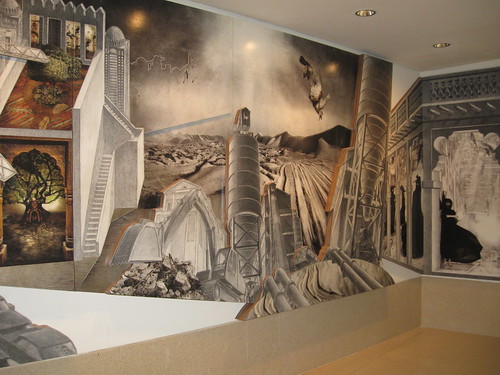In the history of movies
black people have always been portrayed as poor, stupid, and uneducated. All of
those are unfair discrimination that have been attached to the dark skinned people.
An example of that is the large collection of movies in the 80's about being a
gangster, where the qualities that come with being a gangster are violence,
murder and rape. Also, black women are over sexualized in almost all of the
movies.
Arabs, also, have always been discriminated at. You have a long
beard, you wear a headscarf or if you wear the traditional abaya and thobe. You
are immediately discriminated at. It is truly upsetting how much the media have
the prejudice against my own country Qatar by portraying it as the country of the
poor, bad and uneducated. Two examples to prove that are:
1.
In
Transformers which was a blockbuster released in 2007. There was a scene
where the aliens are in Qatar. In this scene the movie changes the country from
the “modern” America to the “poor” Qatar. The Americans come with their big
fancy weapons and modern suits. They start fighting the aliens in what is
supposedly called “Qatar.” And the Qatari citizens run for their lives with
their sheep while they’re wearing old dirty thobes! This was very problematic due to the massive number of people who watched this movie and formed this FALSE idea about Qatar.
2. The Second example comes from another U.S.
blockbuster called Taken. It was
released in 2008. This movie is about a retired CIA agent traveled to France after
his daughter got kidnapped. He discovered she was going to be sold to become
sex slave. In one of the final scenes in the film, his daughter was in an
auction to be sold. The father purses her buyer in a car chase. Here they
showed the shocking part; the car that the father was chasing to get his
daughter had the licence plate of Qatar!!! As a citizen of that country I find it very
upsetting that my country is being portrayed like that. As a place with low
morals where they would buy a human being for sexual pleasure.
Those previous examples can only prove one thing. The media
is feeding the public and the audience these prejudices. A personal example to
show how this is working is a situation that happened to me back in 2009. I was
volunteering for the WSDC schools championship. A British guy approached me saying
he was very surprised of how modern Qatar was. He thought that he would debate
in a tent! He also thought that he would move from tent to tent on a camel.
Personally, I thought that was hilarious because it is far away from the truth.
Qatar is a very modern state. If you haven’t lived or seen Qatar before, this
picture should give you an idea about the modernity of Qatar.
I hope one day those stereotypes would disappear, but deep
down I know this is not going to happen anytime soon. After all it’s only human
nature to put people and judge them into boxes.



























